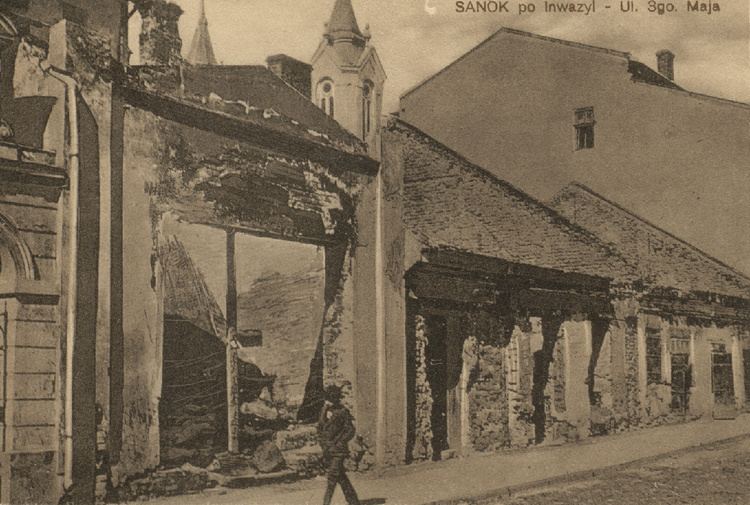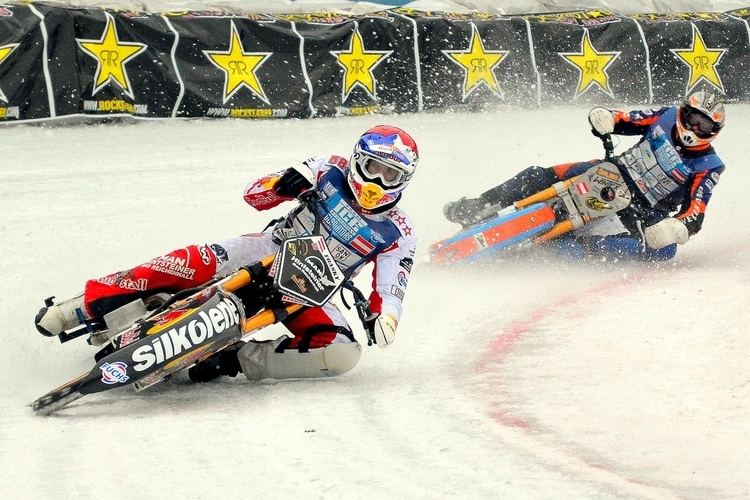Country Poland Area 38.15 km2 | Founded before 12th century Mayor Wojciech Blecharczyk | |
Sanok [?sanok is a town in south-eastern Poland with 39,110 inhabitants, as of 2 June 2009.
Contents
- Map of Sanok
- Ciarko pbs bank kh sanok muks naprzod janow 42
- Dmp sanokzaluzwujskie 2013
- Geography
- History
- Sights
- Economy
- Culture and education
- How to make kimchi my korean grandmas recipe pilot episode
- References
Map of Sanok
Ciarko pbs bank kh sanok muks naprzod janow 42
Dmp sanokzaluzwujskie 2013
Geography
It is the capital of Sanok County in the Subcarpathian Voivodeship. Previously, it was in the Krosno Voivodeship (1975–1998) and in the Ruthenian Voivodeship (1340–1772), which was part of the Lesser Poland province. Historically it was part of the Land of Sanok and the Ruthenian Voivodeship. This historic city is situated on the San River at the foot of Castle Hill in the Lesser Poland (Malopolska) region. It lies in a wooded, hilly area near the national road number 28, which runs along southern Poland, from Ustrzyki Dolne to Wadowice (340 km or 211 mi away). It is located in the heartland of the Pogorze Bukowskie part of Doly (Pits), and its average elevation is 300 m (984 ft) above sea level, although there are some hills located within the confines of the city. Sanok is located on the bank of the river San. The area surrounding mountain range stretching between the Wislok, Oslawa and San Rivers in the Salt Mountains (Central Beskidian Piedmont), in the inland with temperateness climate. The hills of the Bieszczady mountain range are typical for this countryside. Sanok County is bordered by Krosno County to the west, Brzozow County to the north, Przemysl County to the north-east and Lesko County to the east. It also borders Slovakia to the south. Before World War II, the Oslawa and San Rivers line was designated the wild frontier between Poles and Lemkos. The city is a member of Carpathian Euroregion, which is designed to bring together the people who inhabit the region of the Carpathian Mountains and to facilitate their cooperation in the fields of science, culture, education, trade, tourism and economy.
History

In 981 the gord, then inhabited by the Slavic tribe of Lendians, was made a part of Land of Czerwien. This area was mentioned for the first time in 981, when Vladimir I of Kiev took the area over on the way into Poland. In 1018 it returned to Poland, 1031 back to Rus, in 1340 Casimir III of Poland recovered it. The gord of Sanok in mentioned for the first time in Hypatian Codex in 1150. It was given the Magdeburg law by Boleslaw-Yuri II of Galicia in 1339.

It can be found in a Ruthenian chronicle, the Hypatian Codex, where at the date of 1150 one can read: The Hungarian King Geza II of Hungary crossed the mountains and seized the stronghold of Sanok with its governor as well as many villages in Przemysl area. The same chronicle refers to Sanok two more times, informing, that in 1205 it was the meeting place of a Ruthenian princess Anna with a Hungarian king and that in 1231 a Ruthenian prince made an expedition to "Sanok - Hungarian Gate".
After 1339 Galicia–Volhynia was seized by King Casimir III of Poland, who reconfirmed the municipal privilege of Sanok on 25 April 1366. At that time Sanok became the centre of a new administration district called Sanok Land which was a part of the Ruthenian Voivodeship. Several courts of justice operated in the town, including the municipal and rural courts of lower instance and also the higher instance court for the entire Sanok land, based on the German town law. Germans settled in the territory of the Kingdom of Poland (territory of present day Subcarpathian Voivodeship) from the 14th to 16th centuries (see Ostsiedlung), mostly after the region returned to Polish sphere of influence in 1340, when Casimir III of Poland took the Czerwien towns.
Marcin Bielski states that Boleslaw I Chrobry had settled some Germans in the region to defend the borders against Hungary and Kievan Rus, who later turned to farming. Maciej Stryjkowski mentions Germans peasants near Przeworsk, Przemysl, Sanok, and Jaroslaw, describing them as good farmers. The region also traditionally inhabited by the Lemkos, Boykos and Dolinians (Dale Dwellers).
As early at the 17th century, an important trade route went across Sanok connecting the interior of Hungary with Poland through the Lupkow Pass. As a result of the first of Partitions of Poland (Treaty of St-Petersburg dated 5 July 1772, Sanok was attributed to the Habsburg Monarchy. At that time the area (including west and east of Subcarpathian Voivodship) was known as the Galicia province. For more details, see the article Kingdom of Galicia and Lodomeria.
18 February 1846 - beginning of the Galician peasant revolt.
The line of the river Dunajec and that of the San, both in West Galicia, marked the two successive stages in the breakthrough battle which initiated the Austro-German offensive of 1915 on the eastern front. An attempt to stand on the line of the Wislok river and the Lupkow Pass failed before renewed Austro-German attacks on 8 May 1915. Wislok Valley was one of the strategically important Carpathian rivers bitterly contested in battles on the Eastern Front of World War I during the winter of 1914-1915.
During World War I, the Russians came to the town in May 1915 and stayed there until July, leaving the town significantly damaged.
During the Second Polish Republic (1919–1939), Sanok was a known centre of Ukrainian movement in Galicia, and of cultural heritage of the Lemkos and other Rusyns. The Jewish population of Sanok may have been almost 30% for many years in the early 20th century but with the advent of the Nazis, anti-semitism in Ukraine/Poland/Galicia, most of the Jews were either killed or sent to Nazi concentration camps to be killed. The remaining Jewish buildings were taken over after WWII and the local Jewish cemetery still exists although locals seem to not often remember anything about it or the Jewish pogroms that occurred. Some of the Jews emigrated to Canada and the United States in the early 1900s with Sanoker Burial Societies spready throughout New York and other regions where they settled. In 1943 the foundation of the Waffen-SS Division Galizien took place in heavily Ukrainian-populated Sanok, with many locals volunteering in the ethnic Ukrainian Waffen-SS. Because of fear of Ukrainian separatism by both Soviet and Polish authorities, the Ukrainian and Lemko population of Sanok and its region was mostly deported to the former eastern territories of Germany attached to Poland after World War II (the so-called Recovered Territories) during Operation Vistula (1946–1947). Some the Lemkos expelled returned to Sanok after 1989. Sanok contains an open air museum called a skansen in the Biala Gora district, where examples of architecture from all of the regions main ethnic groups have been moved and carefully reassembled in a skansen evoking everyday rural life in the 19th century. Nearby stands Holy Ghost Ukrainian Greek Catholic Church (1786–1947) presently, the tserkva of the Orthodox cathedral of the Holy Trinity.
Sights
Near the central town square and the previous Jewish ghetto, there is a valley where much of the Jewish population was murdered en masse by the Nazis during the Holocaust.
Economy
Sanok has a strong industry base - home to Stomil Sanok (established in 1932) and Pass Gummiwerke plants, producers of various rubber and metal-rubber seals, strings and laggings for automotive sector, construction industries and electrical household goods sector, PGNiG and Sanok Bus Car Factory "Autosan" (established in 1832), a producer of high capacity buses, cabins for the Polish Army and bodies for rail-vehicles. Stomil is next to the main train station in Sanok and Autosan is a 10-minute walk from the station, while the town centre is a 15-minute walk in the other direction.
Culture and education

The town has several public schools and a branch of the Polish High School of Technology. The town also has a football club called Stal Sanok and some other sport clubs (including volleyball, swimming, handball, ice hockey). The Sanok Castle near the centre of the old town houses a museum displaying over 300 fine icons.
